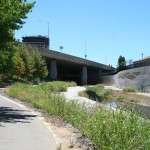More than 100 people showed up at the Santa Clara Valley Water District on Tuesday night to debate the pros and cons of fluoridizing the city’s water. San Jose is the largest city in the United States that does not fluoridate its drinking water, and people remain divided over the possible introduction of a fluoridation plant here.
Initiated in the 1940s, the fluoridation of drinking water is the subject of serious controversy throughout the United States. Intended to prevent tooth decay, studies show that it can prevent as much as 40 percent of all cavities. This idea was echoed by Dr. John PIsacane, a local dentist who attended the meeting. “When I practiced in states that had high levels of fluoride,” he noted, “you’d see fewer kids with a whole mouthful of cavities problem.” Tooth decay is a severe problem in the county, with almost one out of every three kindergarten and third-grade students showing signs of decay, which, proponents say, could have been prevented by fluoridation.
Not everyone agrees, however. In 1992, former United States Environmental Protection Agency scientist Robert Carton claimed that “fluoridation is the greatest case of scientific fraud of this century.” Since then, opponents of fluoridation have come up with their own statistics, and other concerns about the process. According to them, it can stain teeth and cause kidney and bone problems, especially among the elderly. According to one opponent at the meeting, “The only hope of not getting arthritis and stiff joints from fluoride is if your kidneys are able to filter out 50 percent of what you ingest.”
The dispute crosses scientific lines. The U.S. Center for Disease Control calls fluoridation “one of the top medical achievements of the twentieth century.” Other scientists say that it is detrimental or has no effect, while the National Kidney Association has reversed its stand on fluoridation. The NKA has stepped back from its pro-fluoridation stance in 2008 and now maintains a neutral position and calls for further research. The Sierra Club has also come out against fluoridation for environmental reasons and notes that it is not done in Continental Europe.
Whether it will be done in San Jose remains up in the air. One of the major problems proponents now face is cost—the construction of a fluoridation facility in the city could cost as much as $30 million. By law, the Santa Clara Valley Water District may not pass on these costs to consumers, meaning that it will have to find another source of funding if it is to proceed with fluoridation.
 20 Percent of Bridges Have Structural Deficiencies
20 Percent of Bridges Have Structural Deficiencies 
